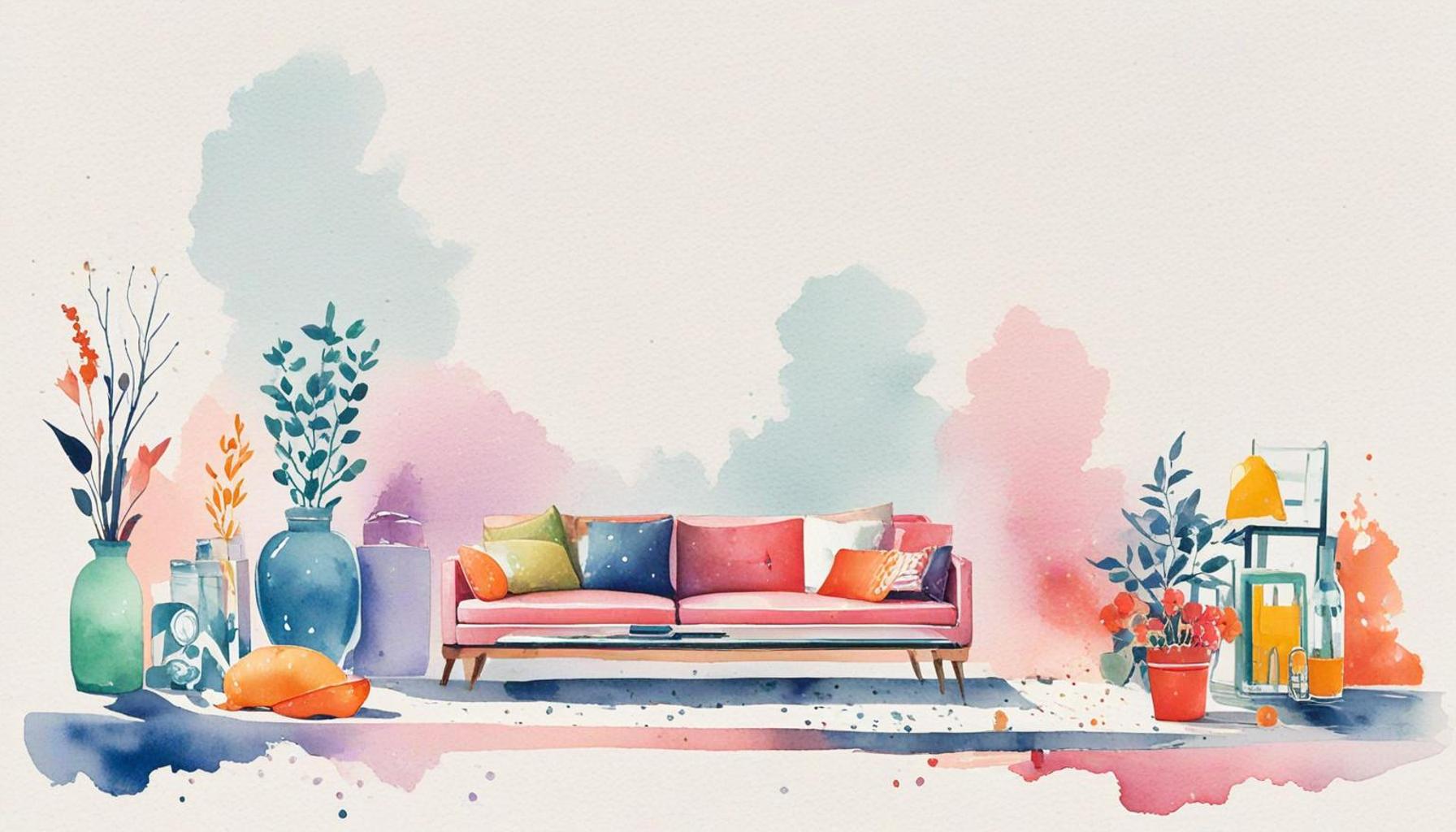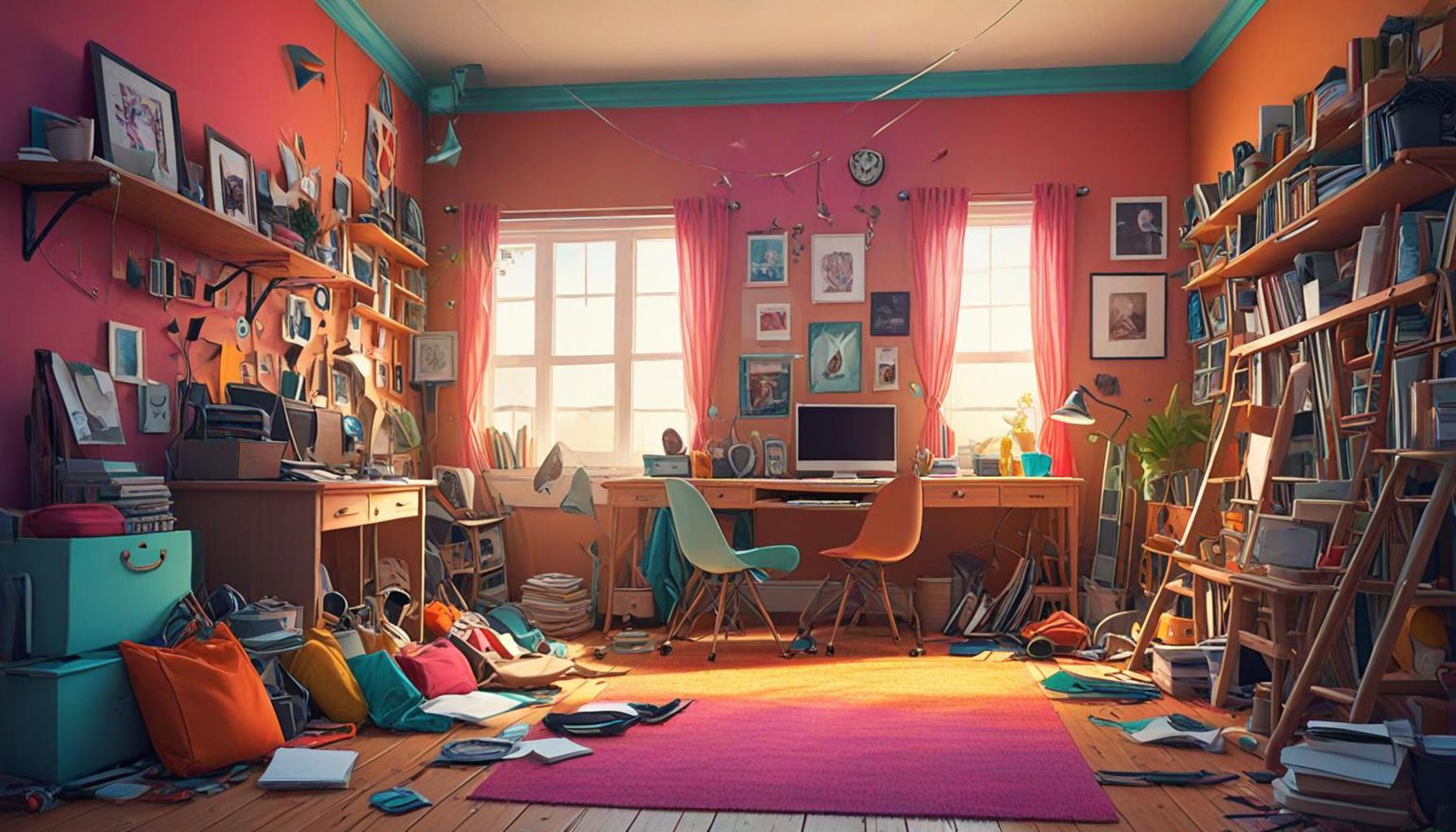Intentional Design and the Art of Simplicity: Demystifying Minimalist Living

Understanding the Essence of Minimalism
In a world inundated with options, the path to clarity often becomes obscured. Intentional design and minimalist living serve as beacons, guiding us toward a more thoughtful existence. This captivating approach emphasizes the importance of purpose in our choices, both in our living spaces and daily routines. As modern society becomes increasingly chaotic, embracing minimalism can help individuals simplify their lives while enhancing their overall well-being.
What is Intentional Design?
Intentional design is about more than just aesthetic appeal; it reflects a conscious decision-making process that resonates deeply with our personal values. It involves:
- Purposeful Selection: Each item we bring into our lives should serve as a source of value and joy. For instance, rather than filling our homes with generic decor, selecting pieces that resonate with personal experiences or evoke positive memories creates a more meaningful environment.
- Functionality: In intentional design, every element is chosen for its clear function. Multi-functional furniture, such as a coffee table that converts into a workspace or a bed with built-in storage, illustrates how design can enhance both aesthetics and practicality.
- Simplicity: Embracing simplicity helps to reduce mental clutter, allowing for a more peaceful and focused mindset. A streamlined workspace, void of unnecessary items, can boost productivity significantly—benefits that many organizations are now recognizing through clean desk policies.
Why Embrace Minimalism?
The art of simplicity can lead to numerous benefits that extend beyond physical space, positively influencing mental and emotional health. Some notable advantages include:
- Improved Focus: A decluttered environment facilitates a clearer mind. Research demonstrates that individuals working in organized settings report higher levels of concentration and lower stress.
- Financial Freedom: Minimalism encourages reducing unnecessary purchases, which can lead to significant savings over time. Simple practices, such as creating a spending journal or adopting a “one in, one out” rule for new purchases, instill mindful habits that protect personal finances.
- Environmental Impact: Minimalist living promotes sustainable practices, such as buying less and choosing quality over quantity. For example, opting for sustainably produced goods not only minimizes waste but also supports eco-friendly companies.
Exploring intentional design and minimalist living invites individuals to rethink their relationship with their surroundings. This lifestyle cultivates a mindset that prioritizes quality over quantity, advocating for thoughtful decisions that lead to increased satisfaction. As we delve deeper into this transformative journey, you’ll discover how intentional choices can foster a sense of peace and fulfillment. Ready to embark on this journey toward freedom and simplicity?
DIVE DEEPER: Click here for more tips on personal organization
Unpacking the Philosophy of Minimalism
Minimalism is often misunderstood as merely a trend; however, its roots run deeper into the philosophies of various cultures and lifestyles. At its core, a minimalist approach embodies the principle of living with less, but it radically redefines what “less” truly means. It encourages individuals to assess their lives through the lens of intentionality, leading to a profound transformation in how we structure our environments, interactions, and even our thoughts.
The Foundations of Minimalist Living
Embracing a minimalist lifestyle involves a few key principles that can redefine one’s everyday experience. Understanding these foundations can significantly enhance one’s journey toward intentional living:
- Mindfulness: Central to minimalism is the practice of mindfulness—being present and consciously aware. This practice enables individuals to discern which possessions, activities, and relationships genuinely bring joy, thus fostering a lifestyle built on meaning rather than accumulation.
- Intentional Consumption: Every item purchased should hold personal significance or contribute to one’s well-being. By consciously choosing what enters our lives, we move away from the mindless consumption that often permeates society. This intentional approach encourages sustainable choices, such as opting for local artisans or second-hand goods.
- Value Connections Over Things: Minimalism highlights that experiences and relationships often outweigh material possessions. Many minimalists emphasize spending time with family or exploring nature over acquiring the latest gadgets, which fosters deeper connections while simplifying life.
The Process of Decluttering
To fully embrace minimalism, the journey often begins with a comprehensive decluttering process. This step is not just about removing physical items but also about shedding mental and emotional baggage. Consider the following strategies to streamline your space and mind:
- Start Small: Tackle one area at a time—whether it’s a closet, a room, or even a digital space. Breaking down the decluttering process into manageable tasks can prevent feelings of overwhelm.
- Use the Four-Box Method: For each area you declutter, bring four boxes labeled: Keep, Donate, Sell, and Trash. This method encourages decisive action and keeps the process organized.
- Establish a Decluttering Routine: Implementing a regular schedule for decluttering—such as once a month or each season—can help maintain a minimalist environment and prevent clutter from re-accumulating.
As you navigate the journey of minimalism, keep in mind that this lifestyle is not about perfection; it’s about progress and personal alignment. The essence of minimalism lies in its adaptability; what simplicity means to one person may differ from another. By engaging with this philosophy, individuals can foster a sense of freedom and clarity, leading to a more fulfilling existence. Ready to explore how intentional design can enhance this journey?
| Category | Description |
|---|---|
| Physical Clarity | A decluttered space enhances focus and productivity, allowing for a clearer mind amidst chaos. |
| Emotional Freedom | Minimalism fosters a sense of peace by reducing distractions and enabling deeper connections with oneself. |
In the pursuit of minimalist living, intentional design plays a crucial role in establishing both physical and emotional spaces that promote simplicity. When individuals commit to clear physical spaces, they often find that the absence of clutter significantly uplifts their productivity and allows them to achieve their goals. Moreover, by focusing on essentials, they can channel their energy into what truly matters, paving the way for greater accomplishment and personal satisfaction. Simultaneously, the emotional benefits of adopting a minimalist lifestyle cannot be overlooked. Many report a profound sense of emotional freedom as they detach from material possessions and distractions that once dictated their lives. This connection to simplicity opens pathways to mindfulness, allowing for a deeper understanding of one’s desires, ambitions, and emotional wellbeing. As more people embrace this lifestyle, the question arises—how can we further delve into the art of simplicity and why does it resonate so strongly in today’s fast-paced world?
DISCOVER MORE: Click here to learn about minimalist habits
Intentional Design: The Intersection of Aesthetics and Functionality
At the heart of minimalist living lies the concept of intentional design—a framework that encourages individuals to create spaces that enhance clarity and tranquility while serving practical needs. The key to achieving this balance involves a keen understanding of aesthetics combined with functionality, thereby cultivating an environment that promotes well-being and productivity.
Design Principles to Consider
When embarking on the journey of intentional design, incorporating specific principles can transform an ordinary space into a sanctuary. Here are some foundational ideas to inspire a minimalist approach to your environment:
- Embrace Open Spaces: The minimalist aesthetic often favors open, airy arrangements. By reducing visual clutter and allowing more natural light to flow through your spaces, you can cultivate a sense of calm and freedom. This can be achieved by opting for furniture with a smaller footprint or incorporating multifunctional pieces that serve dual purposes.
- Neutral Color Palettes: A minimalist design often embraces hues that reflect tranquility—such as whites, greys, and earth tones. These colors create a soothing atmosphere while allowing accent elements to shine. For example, a thoughtfully placed piece of art or a splash of a vibrant color can serve as a focal point, making a dramatic yet intentional statement without overwhelming the senses.
- Quality Over Quantity: Introducing fewer, well-crafted items can significantly enhance the quality of your space. Investing in durable, timeless pieces not only reduces waste but also imbues your home with a sense of character and individuality. Brands like Muji and West Elm emphasize this principle by offering products designed for longevity and versatility.
Functional Minimalism in Daily Living
Intentional design transcends aesthetics; it permeates daily life through functional minimalism. This concept centers around creating efficiencies in your routines, allowing simplicity to foster focus and clarity. Here are some practical applications to consider:
- Streamlined Wardrobe: The ‘capsule wardrobe’ trend is one embodiment of functional minimalism. By curating a collection of versatile pieces that mix and match easily, individuals can save time and energy each day while cultivating a uniquely personal style. Notable figures like Steve Jobs and Mark Zuckerberg have embraced this principle, opting for signature attire to reduce decision fatigue.
- Automated Processes: Technology can play a substantial role in intentional design. Employing automation tools for tasks such as bill payments or reminders can minimize mental clutter. Integrating smart-home devices can also enhance daily efficiency while maintaining a clean aesthetic.
- Mindful Eating Spaces: Consider the configuration of your kitchen and dining area as well. A well-organized, decluttered kitchen equipped with essential appliances encourages healthy cooking habits and fosters a communal atmosphere during meals. Elements like open shelving can allow for easy access while showcasing favorite cookbooks and dishes, marrying beauty with function.
The integration of intentional design into a minimalist lifestyle not only enhances our surroundings but also propels us toward a more purposeful way of living. By prioritizing simplicity and clarity in both our physical spaces and routines, we can unlock the true potential of minimalist living. This conscious effort to design our lives intentionally can pave the way for a more fulfilling, enriching experience, one that resonates not just within our homes but also in our broader personal philosophies.
DON’T MISS: Click here to discover smart space solutions
Conclusion: Embracing a Life of Intentional Simplicity
In a world often overwhelmed by excess and distraction, intentional design and minimalist living offer a clarion call to seek out simplicity and meaning. At its core, intentional design encourages us to evaluate our environments and routines critically, allowing us to focus on what truly enriches our lives. By embracing open spaces, neutral color palettes, and quality over quantity, we transform not just our homes, but also our mindsets.
The beauty of functional minimalism lies in its ability to streamline our daily lives, fostering efficiency and clarity. From curating a capsule wardrobe to leveraging smart technology, minimalism serves as a blueprint for navigating contemporary challenges with ease and grace. As we navigate this path, we invite the possibility of a more meaningful existence, where each choice resonates with purpose and intent.
As you embark on your journey into intentional living, remember that simplicity is not an end, but a continual practice. Each decision you make—from the items you keep to the way you organize your day—contributes to a larger tapestry of mindfulness and tranquility. By demystifying minimalism, we can share its profound insights with others, inspiring a collective movement towards a more intentional and fulfilling way of life. Explore, experiment, and embrace the art of simplicity; the rewards are boundless and deeply personal.


